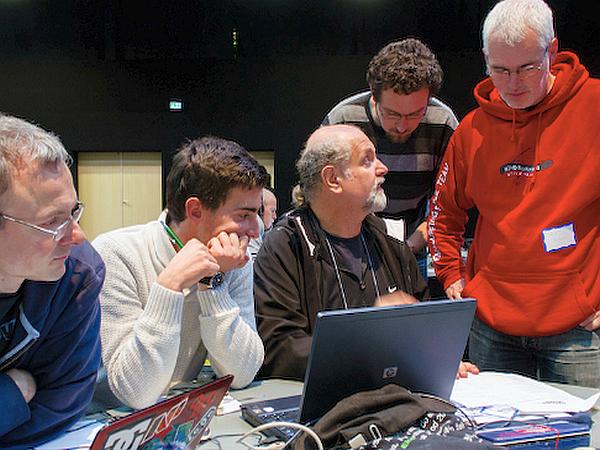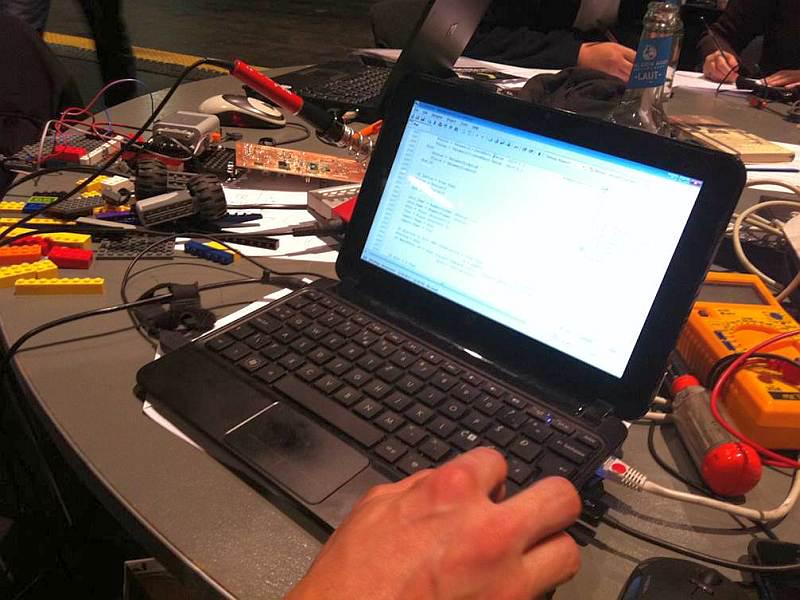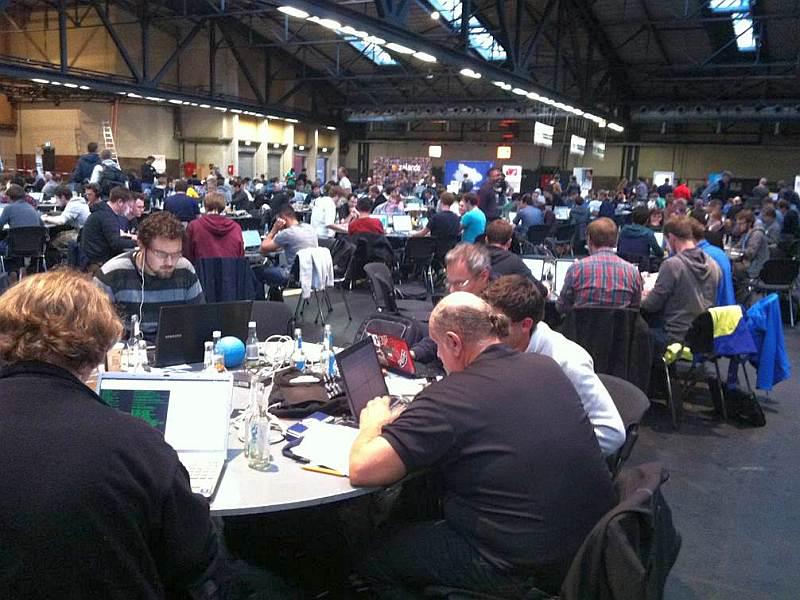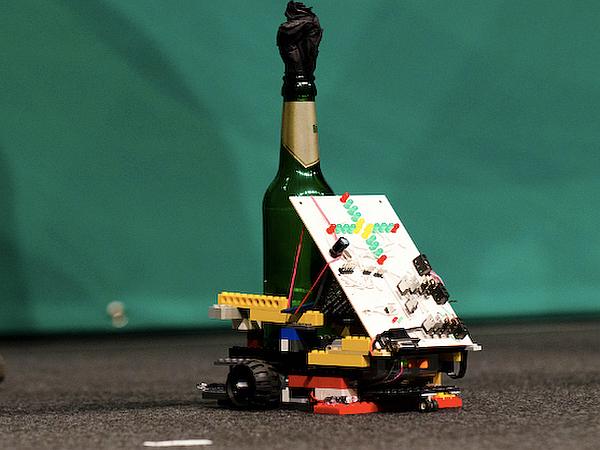


"We have developed the simplest electric vehicle controller," Mr Samo Božič, one of the team members said for MMC. He added that this simplicity needs to be understood as least common denominator within the framework of existing technological facilities.
Nevertheless, according to Božič, this is one of disruptive innovations which are mostly sought at the moment. It is a novelty which does not only cause upheavals in the markets, but can also convince new segments of buyers with its simplicity, innovativeness, and above all affordability.
At first, major companies do not even notice such innovations, then they ignore them, and later on they ridicule them. Finally, they succumb to them, since they are more affordable. He explained that over time such products are improved and can thus capture the market.
Lego, control circuit and a soldering iron
The competition between start-up teams was held as part of TechCrunchDisrupt Berlin at the end of October. On TechCrunch’s website, which is one of the most influential technological portals, it is stated that hackathon is an additional event (or "sweetie") which is organised before the great "disruptive" conference. Several hundreds of programmers and designers gather for this event, forming teams in order to assemble the best possible product in 24 hours. The best teams are awarded with 60 seconds during which they present their product to everyone present.
In addition to teams from the USA, Japan, South Korea, Russia, Mexico, Kenya and many other countries, this time Slovenia also entered the event. The only Slovene team which have managed to introduce their "Beer to beer" project on the hackathon platform comes from the Slovene company ITSI INFO.
The final product, launched by the Slovenian team, was an application run via the Android open-source operating system which can control electric motors to the easiest way possible.
To present how the application is run, the team used solely items they had with them: Lego bricks and bikes, a soldering iron and some electronic components. They adjusted control circuit and programmed the application by means of which several electric motors can be controlled. The main goal of this application was to show that electric motors can be controlled by anyone, regardless of their age and motor abilities.
Trends side with ITSI INFO
There are plenty of possibilities for using such an application. It is control of mini-flying machines that is one among the first ten technologies which are going to mark the world of technology next year, and therefore it is grist to the mill of the "Beer to beer" application. You would control your lawnmower merely with a smart phone, and if there were difficult terrain, it would be the lawnmower that would turn over, not the driver. Mr Božič says that this application might also be used for searching and rescuing people buried under debris.
The event that took place in Berlin was nevertheless just an opportunity to present their concept; however, the team did not restrict themselves solely to Lego. "At a fair in Berlin, which will be held in spring next year, we will present our final product or working prototype into which ideas from the hackathon will also be incorporated, but the product itself will be different. However, I cannot tell you more at the moment," Božič explained.
It is worth waiting a while
Since their product has attracted quite some interest at the conference, we wanted to find out whether the company has accepted any specific bids from investors.
"Of course, many are interested in the product. As regards the investors: if they buy your firm or product at the very beginning, the ratio of revenues between you and your investor is one to nine; and if the company succeeds in developing a working prototype out of the product, then the ratio is approximately eight to two in favour of your company," Božič replied.
Mr Božič is also a founding member of the Association for electric vehicles of Slovenia DEVS (and so is the ITSI INFO managing director Mr Ivan Škrlec, who was also the leader of the Berlin project) and its first president. "A few years ago, in Ljubljana we organised one of the world’s biggest conferences on electrical mobility," Mr Božič said, "and it is nice to see how much success with electrical vehicles, boats and aeroplanes Slovenes achieve across world."
It was a link to electric vehicles that has inspired the team to develop innovative control electronics and simple control applications. Thus, for Mr Škrlec participating at the hackathon was the only rational decision made: "We knew that if we fell behind the development in the world, we would be far away from achieving success. Thus, we did what was needed!" "We took part in the competition in order to show that we exist, that we are capable of developing this or any other product," Mr Božič concluded. And we wish the company every success!
Andrej Čebokli, translated by D. M.



































































